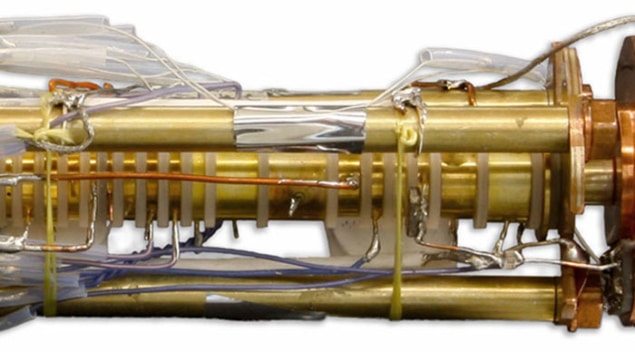
The magnetic moment of the proton has been measured to a precision of 0.3 parts per billion by physicists in Germany. This is factor of 11 improvement on the previous most precise measurement, and means that the magnetic moment of the proton is now known to greater precision than that of the antiproton.
The measurement was made by an international team led by Georg Schneider of the Johannes Gutenberg University of Mainz in Germany and the RIKEN Ulmer Fundamental Symmetries Laboratory in Japan. Working in Mainz, the team used a “double trap” technique to make their measurement and found the proton magnetic moment to be 2.79284734462(82) nuclear magnetons.
Equal and opposite
Schneider and several of his colleagues are also part of a team working on the BASE antiproton experiment at CERN. In October, the CERN team announced that it had used a related trapping technique to measure the magnetic moment of the antiproton, and found it to be −2.7928473441(42) nuclear magnetons. These values are equal and opposite to within experimental uncertainties, just as predicted by the Standard Model of particle physics.
The team now aims to improve the double-trap technique so that even more precise measurements can be made. They also plan to implement the double-trap technique at CERN, so it can be used on antiprotons.
Matter versus antimatter
One important goal of the team’s research is to look for tiny discrepancies between matter and antimatter. If physicists discover that magnetic moments of the proton and antiproton are indeed different in magnitude, it could point to physics beyond the Standard Model and explain, for example, why there is much more matter than antimatter in the universe.
The measurement is reported in Science



